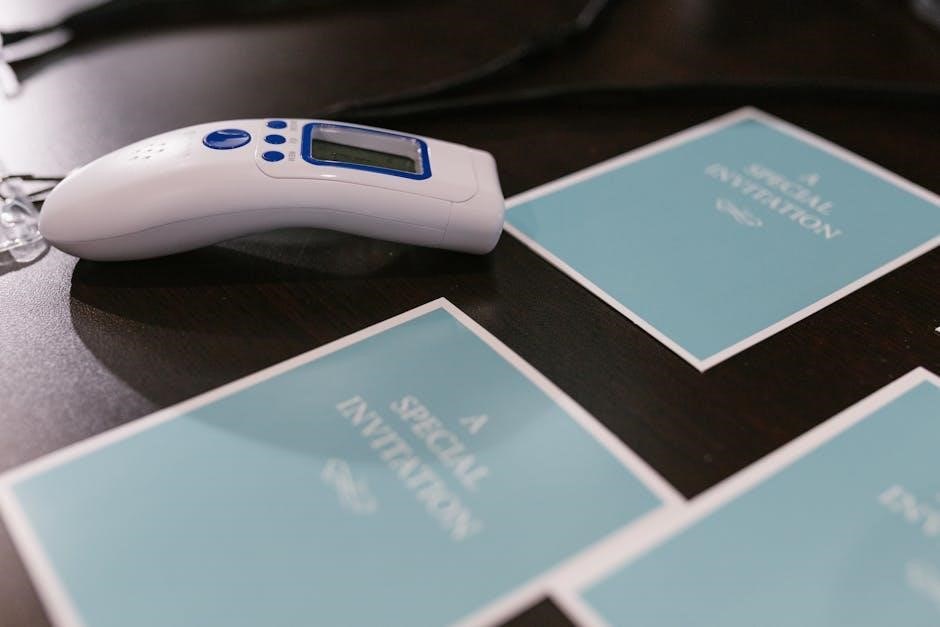jvc auto stereo manuals
JVC auto stereo manuals provide essential guidance for installing, operating, and maintaining car audio systems. These manuals offer detailed instructions, troubleshooting tips, and feature explanations to enhance user experience. Available online in PDF format, they cater to various models, ensuring optimal performance and customization. Users can download them by model number for easy access to setup, maintenance, and advanced features like HD Radio and Bluetooth connectivity.
Understanding the Importance of JVC Auto Stereo Manuals
JVC auto stereo manuals are crucial for optimal performance and safety. They provide detailed instructions for installation, operation, and troubleshooting, ensuring users maximize their car audio systems. These manuals highlight safety precautions, such as volume adjustments to avoid distractions, and offer guidance for maintaining system health. They also cover firmware updates and customization options, like EQ settings and wallpaper downloads, to personalize the experience. By referencing these manuals, users can resolve common issues, understand error codes, and explore advanced features like HD Radio and Bluetooth connectivity. This ensures a seamless and enjoyable experience, making JVC manuals an indispensable resource for car audio enthusiasts.
Overview of JVC Auto Stereo Systems
JVC auto stereo systems are renowned for their high-quality sound and advanced features, offering a seamless in-car entertainment experience. These systems include CD receivers, digital media receivers, and touch-screen models, catering to diverse preferences. They support Bluetooth connectivity, HD Radio, and smartphone integration, enabling wireless music streaming and hands-free calls. Many models feature customizable EQ settings and downloadable wallpapers for personalization. JVC systems often come with intuitive interfaces, making it easy to navigate through various functions. Additionally, they support satellite radio and laser-based technologies, ensuring a modern and immersive audio experience. These systems are designed to be compatible with various car models, ensuring straightforward installation and adaptation to different vehicle setups.

Types of JVC Auto Stereo Manuals Available
JVC offers various manuals, including user guides for operation, installation instructions, and troubleshooting resources. These manuals cater to different needs, ensuring comprehensive support for setup, maintenance, and repair.
User Manuals for Operation and Features
User manuals for JVC auto stereos provide detailed guidance on operating features like volume control, mode switching, and connectivity options. They explain Bluetooth, USB, and aux inputs, ensuring seamless integration with devices. Manuals also cover touchscreen navigation, EQ settings, and preset radio stations for personalized listening experiences. Advanced features such as voice command and smartphone app compatibility are thoroughly documented. Troubleshooting sections address common issues, while technical specifications ensure users understand their system’s capabilities. These manuals empower users to explore all functions, optimize performance, and enjoy enhanced audio experiences tailored to their preferences. Clear instructions help users maximize their stereo’s potential and troubleshoot effortlessly.
Installation Guides for Stereo Systems
Installation guides for JVC auto stereos provide step-by-step instructions for mounting and connecting systems in vehicles. They detail wiring diagrams, dashboard removal, and harness connections to ensure compatibility with various car models. Manuals include troubleshooting tips for common installation issues like power supply or speaker connectivity. Safety precautions, such as disconnecting the battery before starting, are emphasized to prevent accidents. These guides also cover system calibration post-installation, ensuring optimal audio performance. By following the manual, users can achieve a professional-grade setup tailored to their vehicle’s specifications, ensuring seamless integration and functionality. Proper installation is crucial for both safety and system longevity.
Troubleshooting and Maintenance Manuals
Troubleshooting and maintenance manuals for JVC auto stereos help users resolve common issues and keep their systems in optimal condition. These guides provide detailed solutions for problems like connectivity errors, sound distortion, or display malfunctions. They often include diagnostic steps to identify root causes, such as faulty wiring or software glitches. Maintenance tips, such as cleaning connectors or updating firmware, are also highlighted to prevent system degradation. Additionally, manuals may cover error code explanations, offering clear responses and fixes. Regular maintenance practices, like checking speaker connections or resetting settings, ensure long-term performance. These resources empower users to address issues independently, minimizing downtime and enhancing overall system reliability.
Downloading JVC Auto Stereo Manuals
JVC auto stereo manuals can be easily downloaded from official websites in PDF format. Simply enter your device’s model number to access the specific guide.
Steps to Download Manuals from Official Websites
To download JVC auto stereo manuals, visit the official JVC website and navigate to the support or manuals section. Use the search function to find your specific model by entering its name or number. Select the correct model from the search results and choose the desired manual type, such as user or installation guides. Manuals are often available in multiple languages and formats, including PDF. Click the download link to save the manual to your device. Ensure the model number matches your stereo system for accurate information. Some manuals may also include additional resources, such as EQ settings or wallpapers, for enhanced customization;
Using Model Numbers for Accurate Downloads
Using the correct model number ensures you download the appropriate manual for your JVC auto stereo. Locate the model number on the device or its packaging, typically a combination of letters and numbers. Visit the official JVC website and enter this number in the search bar. This guarantees the manual matches your system’s specifications, providing accurate installation, operation, and troubleshooting information. Double-check the model number to avoid downloading incorrect guides, which could lead to confusion or improper setup. Accurate model identification is crucial for accessing the right support resources and maintaining optimal performance.
Using JVC Auto Stereo Manuals Effectively
JVC auto stereo manuals are designed to simplify system operation and troubleshooting. They provide clear instructions for setup, feature customization, and maintenance, enhancing user experience and system performance effectively.
Navigating the Manual for Easy Understanding
JVC auto stereo manuals are structured to ensure easy navigation and comprehension. The Table of Contents provides quick access to specific sections, such as installation, features, and troubleshooting. Diagrams and illustrations are included to visually guide users through complex setup or repair processes. The manual is divided into clear categories, like Features, Operation, and Maintenance, making it simple to locate relevant information. Troubleshooting sections are organized by common issues, offering step-by-step solutions. The use of clear, concise language ensures that even technical details are accessible. Additionally, an index at the end allows users to quickly find specific topics, enhancing overall usability and efficiency. Regular updates ensure the manual remains relevant and accurate.
Referencing Manuals for System Setup
Referencing JVC auto stereo manuals is crucial for proper system setup. These manuals provide detailed, model-specific instructions for installation and configuration, ensuring compatibility with your vehicle. Step-by-step guides help users connect wiring, mount components, and configure settings accurately. Diagrams and illustrations simplify complex processes, while troubleshooting sections address common setup issues. The manual ensures optimal performance by guiding users through initial calibration and feature activation. By following the manual, users can avoid installation errors and ensure all features function as intended. This comprehensive approach makes the setup process efficient and stress-free, even for those with limited technical experience. Adhering to manual guidelines guarantees a seamless and reliable system operation.
Troubleshooting Common Issues
JVC auto stereo manuals help identify and resolve common issues like connectivity problems or error codes. They provide step-by-step solutions and diagnostic guides for quick repairs and optimal functionality.
Identifying Common Problems and Solutions
JVC auto stereo manuals detail common issues like connectivity problems, error codes, and sound distortions. They provide troubleshooting steps, such as checking wiring, restarting the system, or updating firmware. Solutions often involve resetting settings, ensuring proper installation, or cleaning connections. Manuals also guide users through diagnosing issues with displays, Bluetooth pairing, or USB functionality. By referencing these resources, users can quickly identify and resolve problems, ensuring optimal performance and extending the lifespan of their stereo systems. Regular maintenance tips are also included to prevent recurring issues and maintain sound quality.
Understanding Error Codes and Responses
JVC auto stereo manuals provide detailed explanations of error codes and their meanings, helping users diagnose and resolve issues quickly. Common codes include those for connectivity problems, firmware updates, or system malfunctions. Manuals guide users through troubleshooting steps, such as restarting the stereo or checking connections. Specific codes, like “E01” for USB errors or “E02” for Bluetooth issues, are explained with solutions. Additionally, manuals outline responses to laser product precautions, ensuring safe operation. By understanding these codes and responses, users can address problems effectively, minimizing downtime and ensuring optimal performance. This section is crucial for maintaining and repairing JVC stereo systems efficiently.

Maintenance Tips from JVC Manuals
JVC manuals recommend regular volume adjustments for safety and optimal sound quality. Lowering volume before playing digital media helps prevent distortion and ensures clear audio performance.
Regular Maintenance for Optimal Performance
Regular maintenance is crucial for ensuring your JVC auto stereo operates at its best. This includes adjusting volume settings to prevent distortion and ensuring clear audio output. Lowering the volume before playing digital media helps maintain sound quality and prevents sudden loud noises. Additionally, updating firmware and software is essential for accessing new features and fixing potential bugs. JVC manuals also recommend checking connections and cables for stability to avoid signal loss. By following these steps, you can extend the lifespan of your system and enjoy uninterrupted entertainment on the road.
Updating Firmware and Software
Updating your JVC auto stereo’s firmware and software is essential for optimal performance and accessing new features. Manuals provide step-by-step instructions for downloading and installing updates from JVC’s official website. Ensure your system is connected to a power source during updates to avoid interruptions. Regularly check for firmware updates to enhance functionality, improve compatibility, and fix potential issues. Updated software may include new features like HD Radio, Bluetooth improvements, or app integration. Follow the manual’s guidance to ensure a smooth update process and keep your stereo system up-to-date with the latest advancements in car audio technology.

Smartphone Integration and Apps
JVC auto stereo manuals detail smartphone integration, enabling seamless connectivity via Bluetooth or apps. Users can control music, navigation, and calls through JVC apps, enhancing driving experiences with voice commands and media streaming.
Connecting Smartphones to JVC Stereos
JVC auto stereo manuals provide step-by-step guidance for connecting smartphones to your car stereo system. Use Bluetooth, USB, or JVC’s Smartphone Link app for seamless integration. Enable Bluetooth pairing on both devices, or connect via USB for wired control. Once connected, access music streaming, hands-free calls, and voice commands. Some models support MirrorLink for mirroring smartphone interfaces. Ensure your stereo and smartphone are compatible with the selected connection method. Refer to your specific JVC model’s manual for detailed instructions and troubleshooting tips to ensure a smooth setup process and optimal functionality on the road.
Using JVC Apps for Enhanced Features
JVC apps like Smartphone Link and My Sound EQ unlock advanced features for your car stereo. These apps allow wireless control of your stereo system, enabling easy access to music playlists, navigation, and hands-free calls. Customize sound settings with My Sound EQ, creating personalized audio profiles. Additional features include downloadable wallpapers to personalize your stereo’s display and firmware updates to keep your system up-to-date. By installing these apps, you enhance your driving experience with intuitive controls and tailored entertainment options. Always refer to your JVC auto stereo manual for compatibility and installation guidance to ensure smooth functionality and optimal performance.

Customization Options Explained
JVC auto stereo manuals detail personalization options, allowing users to adjust settings, download wallpapers, and customize EQ preferences for a tailored audio experience.
Adjusting Settings for Personal Preference
JVC auto stereo manuals provide detailed guidance on customizing settings to match individual preferences. Users can adjust audio settings like bass, treble, and balance, as well as set display colors and brightness. Manuals also explain how to customize home screens, adding frequently used features for easy access. Additionally, users can personalize EQ settings to enhance sound quality, ensuring a tailored listening experience. These adjustments are typically outlined in the manual, allowing users to optimize their stereo system for both performance and visual appeal. By following the manual’s instructions, users can create a personalized audiovisual experience that aligns with their unique preferences and driving habits.
Downloading Wallpapers and EQ Settings
JVC auto stereo manuals detail how to download wallpapers and EQ settings for a personalized experience. Users can access a variety of wallpapers through the JVC app or official website, allowing customization of the stereo’s display. EQ settings can also be downloaded to enhance audio quality, with options to save and recall preferred configurations. These features, as outlined in the manual, enable users to tailor both the visual and audio aspects of their car stereo system. By following the manual’s guidance, users can easily download and apply these settings, ensuring a unique and enjoyable listening experience in their vehicle.

Safety Precautions When Using JVC Stereos
Always adjust volume to hear external sounds to prevent accidents. Lower volume before playing digital files. Avoid distractions while driving. Follow laser product precautions carefully.
Volume and Distraction Safety Tips
Always adjust the stereo volume to a level where you can clearly hear external sounds, such as car horns or sirens, to ensure safe driving. Lower the volume before playing digital files or switching sources to avoid sudden loud noises. Avoid adjusting settings while driving, as this can cause distractions. Use steering wheel controls or voice commands to minimize manual interactions. Never operate the stereo in a way that takes your attention off the road. Keep the system updated to ensure compatibility and optimal performance. Refer to the manual for specific guidelines on safe operation and volume limits to enhance your driving experience while staying safe.
Precautions for Laser Products
When handling JVC auto stereo components with laser technology, ensure caution to avoid exposure to radiation. These products are classified as Class 1 Laser Devices, meaning they emit invisible laser beams that can be harmful if the safety interlocks are bypassed. Never attempt to open or modify the laser housing, as this can result in exposure. Always follow the manufacturer’s guidelines for installation and maintenance. Keep the device out of reach of children and avoid direct eye exposure. Refer to the manual for specific safety precautions and adhere to all warnings to ensure safe operation and compliance with safety standards.
Customer Support and Resources
JVC provides comprehensive customer support through official websites, online forums, and community resources. Users can access manuals, troubleshooting guides, and interact with experts for assistance and solutions.
Contacting JVC Support for Assistance
For assistance, users can contact JVC support through official websites or online forums. Many manuals and troubleshooting guides are available for download, ensuring quick solutions. Specific models, like the KW-M785BW, offer multilingual manuals, while online forums allow users to ask questions and share experiences. JVC’s customer support resources include detailed troubleshooting sections and error code explanations. Users can also access firmware updates and customization options, such as My Sound EQ and wallpaper downloads. Additionally, laser product precautions and safety tips are provided to ensure safe usage. JVC’s support infrastructure is designed to help users maximize their stereo’s potential and resolve issues efficiently.
Online Forums and Community Help
Online forums and community platforms offer valuable support for JVC auto stereo users. Websites dedicated to car audio systems host discussions where users share tips, solutions, and experiences. Many forums allow users to ask specific questions about their JVC models, such as the KW-M785BW, and receive guidance from experienced owners or technicians. These communities often provide links to manuals, troubleshooting steps, and customization ideas. Additionally, JVC’s official support page directs users to forums and FAQs for further assistance. Engaging with these resources fosters a sense of collaboration and ensures users can resolve issues and optimize their stereo systems effectively. Active participation in forums enhances the overall user experience.

Advanced Features of JVC Auto Stereos
JVC auto stereos offer advanced features like HD Radio, Satellite Radio, and Bluetooth connectivity. These technologies provide high-quality sound, wireless streaming, and seamless smartphone integration for enhanced driving experiences.
HD Radio and Satellite Radio Features
JVC auto stereos support HD Radio and Satellite Radio, offering crystal-clear sound and diverse channel options. HD Radio provides over 140 channels with commercial-free music, sports, and news. Satellite Radio, including SiriusXM, adds 50+ sports and entertainment channels. These features enhance listening experiences with static-free broadcasts and exclusive content. Users can easily control these services via the stereo’s interface, ensuring seamless entertainment on the go. These advanced radio features make JVC systems a top choice for drivers seeking high-quality audio and extensive channel variety.
Bluetooth and Wireless Connectivity
JVC auto stereos feature advanced Bluetooth and wireless connectivity options, enabling seamless smartphone integration. Users can stream music, make hands-free calls, and access voice commands effortlessly. Bluetooth technology supports multi-device pairing, ensuring convenient connectivity for drivers and passengers. Wireless audio streaming is enhanced with high-quality codecs like AAC and FLAC, delivering superior sound clarity. Additionally, JVC systems often integrate with smartphone apps, allowing for remote control and personalized settings. These wireless features elevate the driving experience, combining modern convenience with exceptional audio performance. They ensure a hassle-free and enjoyable in-car entertainment system tailored to today’s connected lifestyle.
Future of JVC Auto Stereo Technology
JVC is innovating with voice command integration, AI-driven personalization, and enhanced wireless connectivity. Future models may feature high-resolution audio support and eco-friendly designs, advancing in-car entertainment technology.
Upcoming Innovations and Features
JVC is set to unveil cutting-edge advancements in car audio technology. Future systems will feature high-resolution audio compatibility, AI-driven voice assistants, and advanced smartphone integration. Enhanced wireless connectivity options, including improved Bluetooth and Wi-Fi capabilities, will streamline device pairing. Additionally, JVC is exploring eco-friendly designs and energy-efficient components to align with global sustainability trends. These innovations aim to provide seamless, intuitive, and immersive in-car entertainment experiences, ensuring JVC remains at the forefront of automotive audio technology.
JVC auto stereo manuals are indispensable resources for optimal system performance. They offer comprehensive guides for installation, troubleshooting, and customization, ensuring users maximize their car audio experience. JVC’s commitment to innovation and user support ensures these manuals remain essential for drivers seeking high-quality in-car entertainment solutions.
Final Thoughts on JVC Auto Stereo Manuals
JVC auto stereo manuals are essential for maximizing the potential of your car audio system. They provide clear instructions for installation, operation, and troubleshooting, ensuring optimal performance. Whether you’re setting up a new system or resolving issues, these manuals are invaluable. With detailed guides on customization, connectivity, and maintenance, users can tailor their experience to personal preferences. Accessing these manuals online is straightforward, and they are tailored to specific models, making them highly practical. By following the guidelines, users can enjoy enhanced features like HD Radio and Bluetooth seamlessly. JVC’s commitment to innovation and user support ensures these manuals remain a vital resource for drivers seeking premium in-car entertainment solutions.
































































